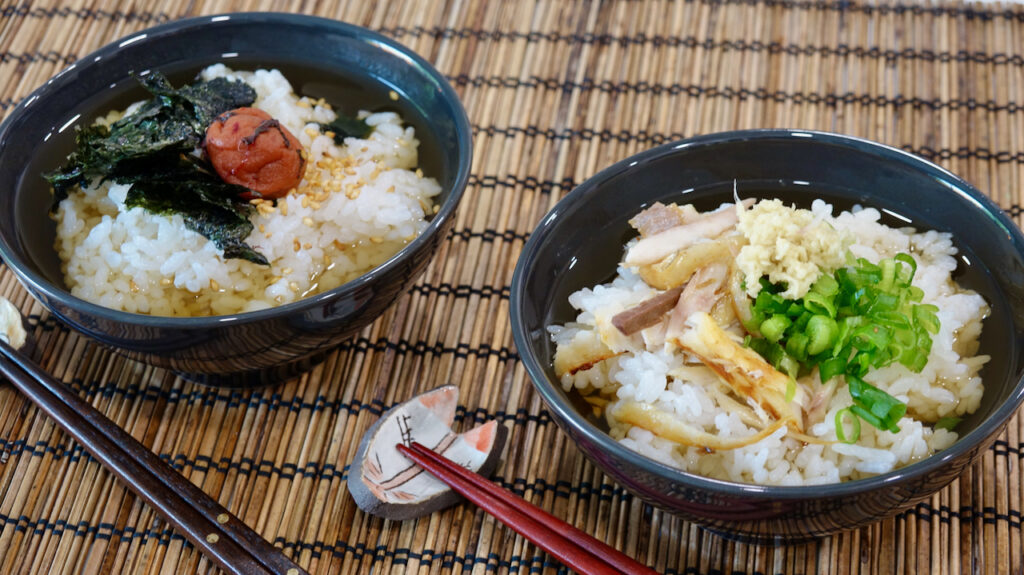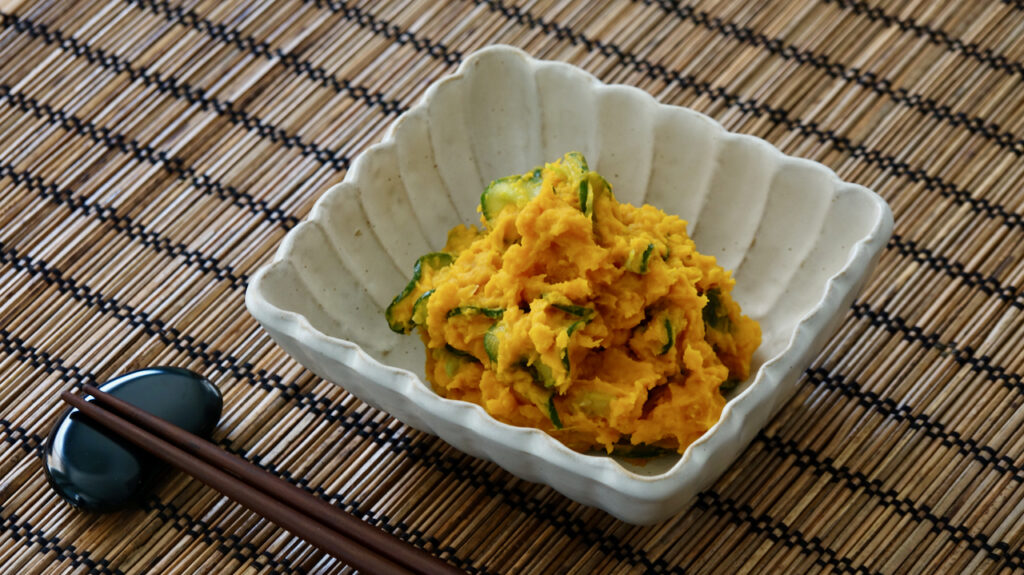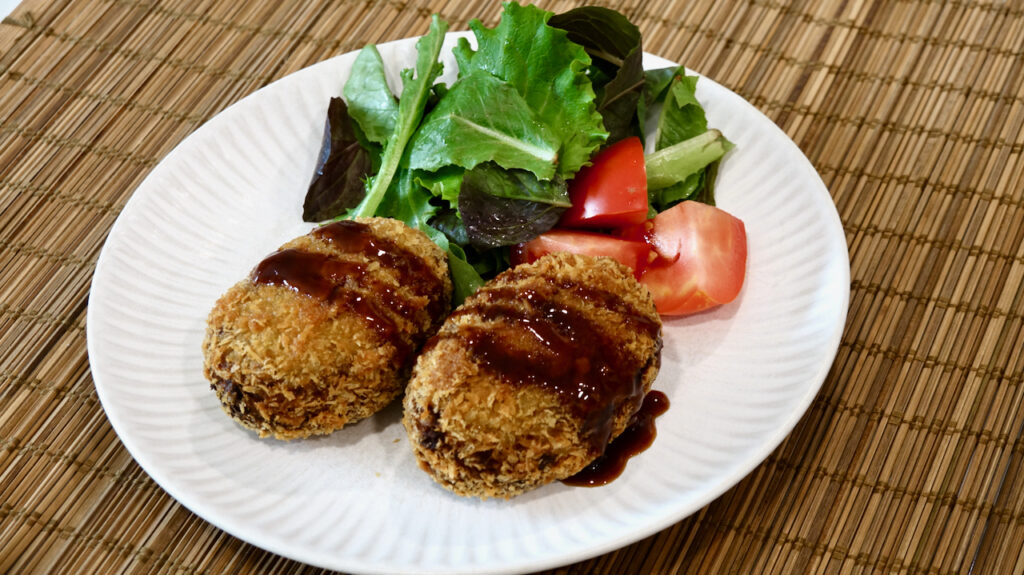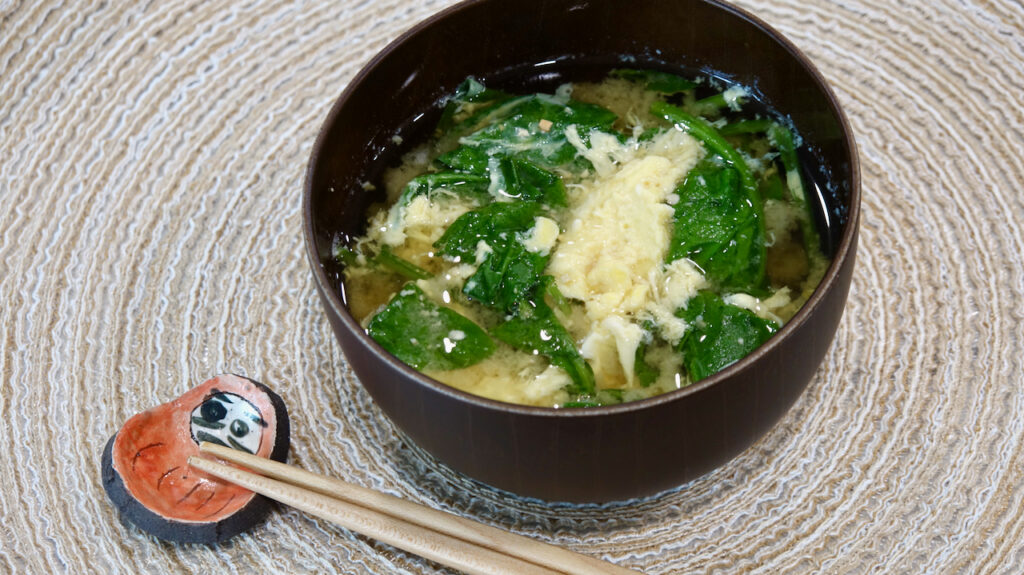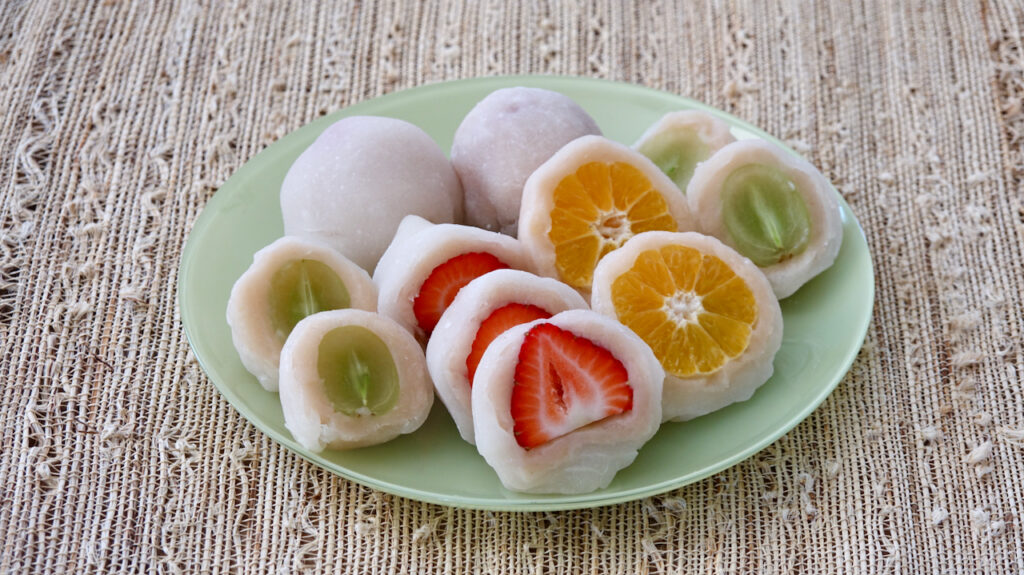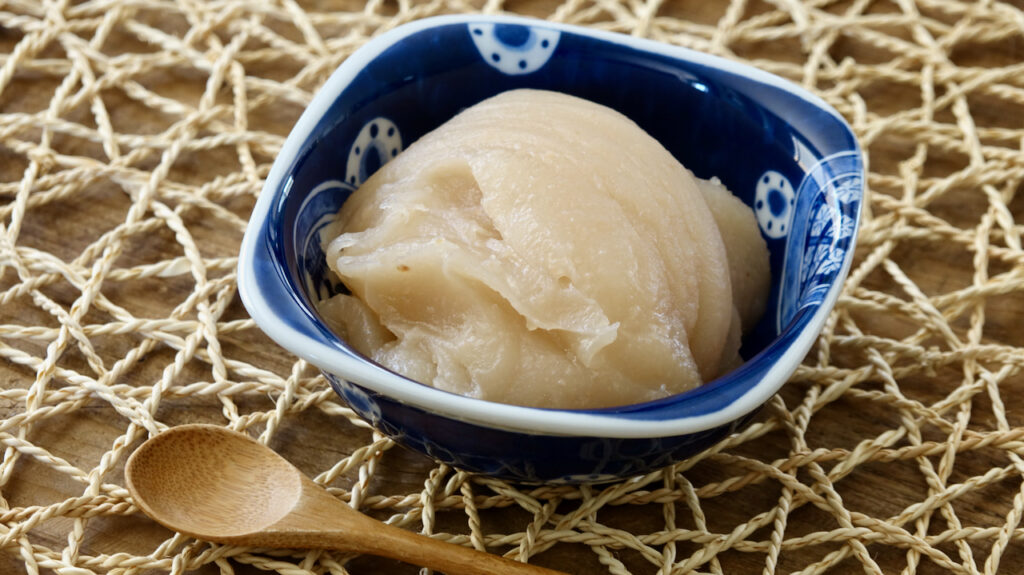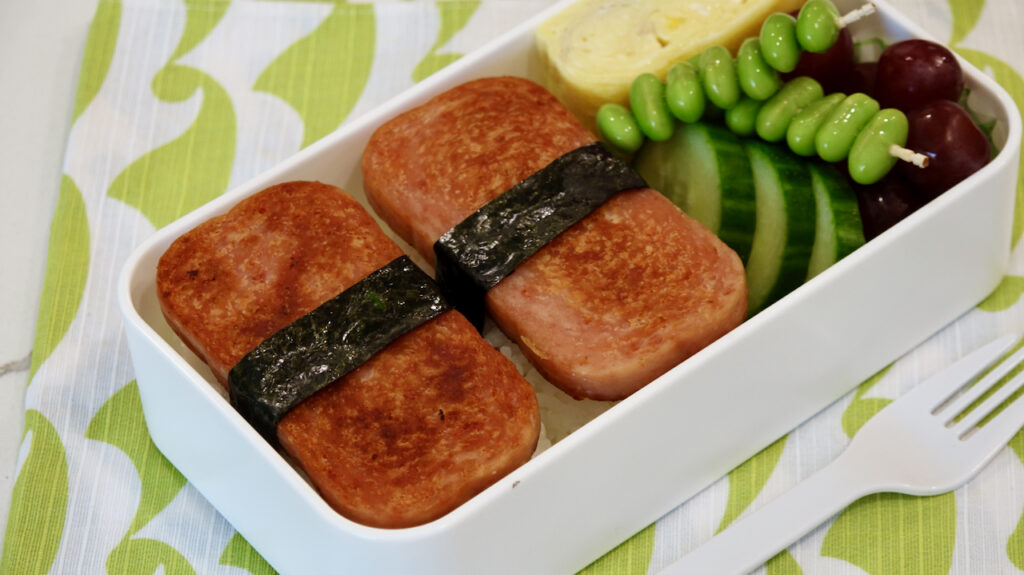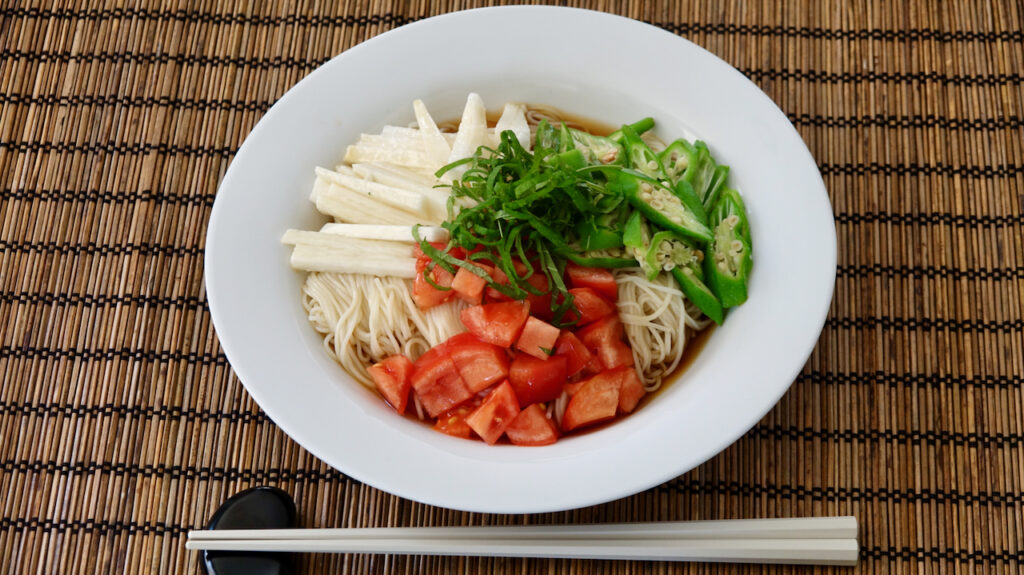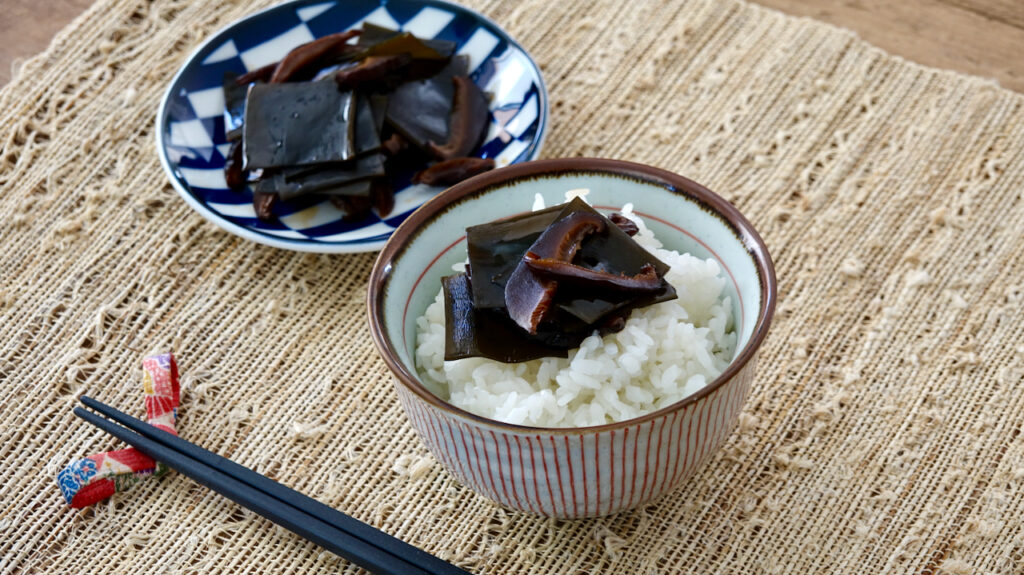Ochazuke is Steamed Rice with hot tea poured over and some added toppings. It is not really a formal meal, but Ochazuke is often eaten when you don’t have time or don’t want to cook. Dashi Chazuke is using seasoned Dashi instead of merely tea, so there is a tiny bit more cooking involved to make Dashi broth.
Kabocha Salad is mashed Kabocha mixed with mayo and seasonings. It is a popular side dish for Bento or any Japanese meal. Kabocha (Japanese pumpkin) is sweet, healthy, and very versatile. You can cook it just like potatoes. Mash it, fry it, simmer it, etc. We made Kabocha salad with cucumbers here, but you could add other vegetables like sliced onion or cooked broccoli, and some protein like boiled eggs or ham. It is similar to Japanese potato salad, but the ingredients here are a lot simpler. Kabocha can be softened in the microwave very easily and quickly, so the salad can be made in no time. It could be mashed completely to have a smooth texture or leave some chunks to enjoy a heartier dish. This salad is so easy and tasty that you need to try it for a weekday supper
Curry Korokke is just like Japanese Potato Korokke (croquette) but the filling is flavored with curry powder. The process and ingredients of making Curry Korokke are very similar to regular Korokke, but a little change of the spice makes this ordinary entree taste like a completely different food.
Fruit Daifuku is a Japanes Mochi dessert, Fruit, like strawberry, is wrapped in Anko sweet bean paste, then in Mochi rice cake. Fruit Daifuku is not a very traditional sweet, but it’s been around for a few decades now, and it is one of the most popular items at Wagashi Japanese sweet shops.
Shiro An is sweet white bean paste, and it is a crucial ingredient for Japanese traditional confectioneries, just like Anko sweet red bean paste. Shiro An is made from white kidney beans and sugar. It’s used in a lot of different forms of desserts in Japan, from fresh Mochi desserts such as Fruit Daifuku to baked Manju so it is a great recipe to know if you like making Japanese sweets.
Spam Musubi is a Rice Ball with grilled Spam on top. The whole thing is wrapped with a strip of Nori seaweed. It is a popular Hawaiian dish but also found in some regions of Japan.
In addition to Onigiri, Musubi or Omusubi is another word for rice ball in Japanese. Spam meat was a combat ration for soldiers in the American military during World War II. After Japanese-American soldiers came back to Hawaii after the war, Spam turned into a popular local food when they brought the canned meat with them. Areas in Japan that have a big American military presence, especially Okinawa, also have a lot of food from the American military after the war, and Spam dishes became popular for restaurant and home food.
Noritama Furikake is a rice seasoning made with egg and Nori roasted seaweed. It is a very popular kind of Furikake, and used often over Steamed Rice in Bento boxes or Onigiri rice balls. Sweet flavored egg granules and salty Katsuo bonito flakes give a lot of flavor to simple white rice.
Summer Vegetable Somen is cold Somen noodles with summer vegetables like okra and tomato. The sauce is also cold, simple Mentsuyu poured over the noodles. This easy to make cold noodle dish is perfect on hot summer days. Even when you don’t have much appetite on a hot day, this will cool you down and give you good nutrients and energy.
Shiitake Kombu Tsukudani is rehydrated dried Shiitake mushrooms and Kombu seaweed that are cooked and seasoned mainly with sugar and Soy Sauce. It is a great accompaniment for plain Steamed Rice for its strong sweet and salty flavor. You can use it to top a bowl of plain Steamed Rice or with Ochazuke, rice and tea.
